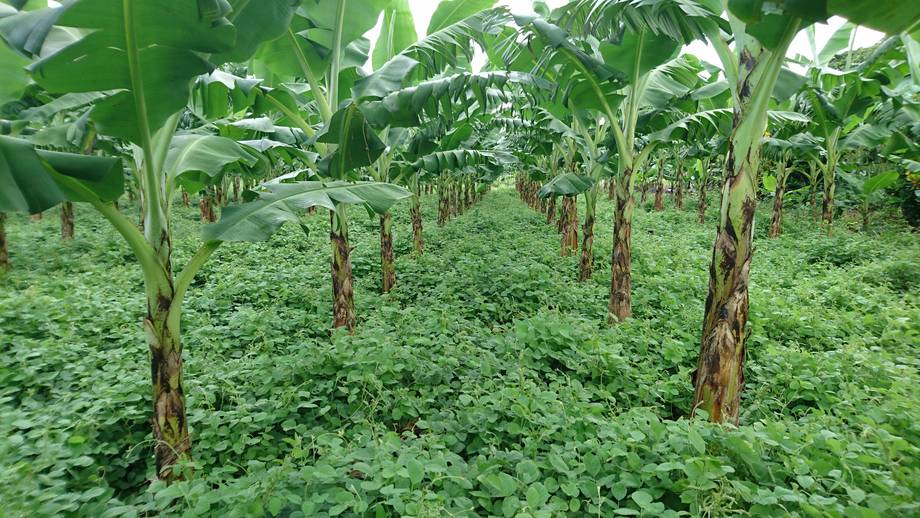
Reducing carbon and water footprints on banana plantations
The banana sector is currently facing interconnected challenges that deteriorate the resilience of ecosystems on banana plantations worldwide. In this sense, carbon and water reduction strategies are becoming fundamental for the banana industry. These strategies prevent and mitigate environmental impacts and allow further adaptation to climate change and adverse conditions. Members of the WBF acknowledge the contribution of agriculture to total global greenhouse gas (GHG) emissions and the freshwater consumption. Therefore, the initiative aims to mainstream the adoption of low carbon strategies and efficient water management in the banana value chain by means of a standardized and proven methodology and tool.
The project also intends to catalyse transformational approaches to timely promote environmental sustainability with a value chain approach. This includes stakeholders, such as producers, traders, NGOs, research institutions, certification bodies, governments and retailers to advance and strengthen environmental governance.
The goal
The goal of this project is to mainstream the adoption of low carbon strategies and efficient water management in the banana value chain. It aims to provide technical expertise in the field, strategic advice, global coordination, neutral information sharing, governance facilitation and new value-chain approaches. In this sense, the project will contribute to a better use of natural resources, the reduction of greenhouse gas emissions and the sustainable production of bananas.
Three phases compose the Carbon and Water Footprint (CWF) initiative:
PHASE I (2017): The methodological guide was developed to measure and reduce carbon and water footprints. This phase included a pilot in Costa Rica. The guide was published in English and Spanish in 2018.
PHASE II (2020): Create a tool using the above guide, which will be in the form of an automated platform accessible online (cloud). Conduct training and validation sessions, hand-in-hand with producer associations in Ecuador, Colombia Costa Rica and Guatemala.
Phase III (2022): Improve the created tool by expanding its scope and robustness, as well as conducting training and validation sessions, hand-in-hand with producer associations and companies in, Colombia, Costa Rica, Dominican Republic, Ecuador, Guatemala, Panama and Brazil.
Objectives
• To produce an online automated practical tool to quantify, measure and support the development of strategies to reduce carbon and water footprint of banana plantations;
• To promote knowledge transfer and best practices among banana farmers and actors of the value chain
• To support the sustainable use of natural resources, and an efficient, effective and optimized water management;
• To prepare organizations to comply with agricultural and environmental standards at national and international levels; The third phase of the project also aims to test a distributed ledger system (blockchain) to enable transparency and traceability of the environmental footprint of bananas produced from farm to retail, in order to encompass a greater number of beneficiaries.• To build climate resilience into banana supply chains;
• To provide valid and reliable information to strengthen national policies in terms of low carbon strategies and water stewardship; and
• To raise awareness and educate consumers on the efforts of the global banana industry in reducing carbon emissions and impact on water use and management.
•To increase transparency and traceability regarding GHG emissions and water impact across the banana value chain
The project is ongoing, and new partners are welcome to join the implementation activities.
Collaborations
Contributors to the implementation of the first phase
GIZ
AgroFair
Chiquita
CORBANA
Dole
EARTH University
Fyffes
Inteco
Ministerio de Agricultura de Costa Rica (MAG)
Ministerio de Ambiente y Energía de Costa Rica (MINAE)
Rainforest Alliance
Tesco
WWF
Technical implementation by Gestarse
Contributors to the implementation of the second phase
CORBANA
AgroAmérica
AgroFair
Rainforest Alliance
Dole
Fyffes
Fairtrade Internacional
Technical implementation by Gestarse with the support of University of Castilla la Mancha and the National Metrology Laboratory of Costa Rica (LCM)

